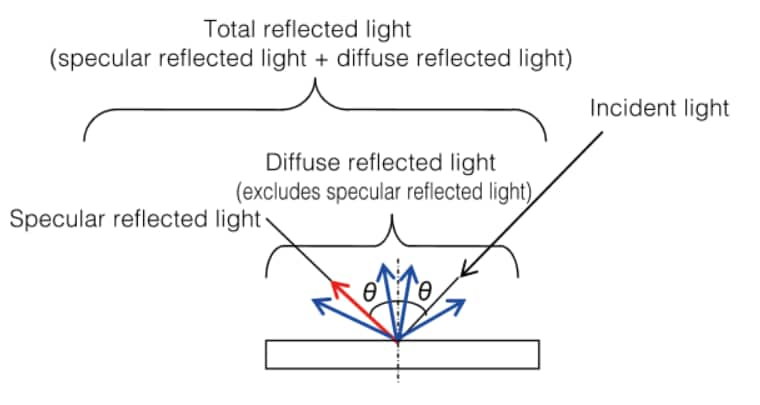What is relative total reflectance?

Determine relative total reflectance by measuring all the reflected light, including both specular and diffuse reflected light, as shown here. This is effective for samples with either rough or shiny surfaces.
Relative total reflectance is measured using an integrating sphere attachment. Relative total reflectance is measured by shining light on the sample at an incident angle of about 10 degrees or less (8 degrees for most integrating spheres) and using an integrating sphere to measure not only the diffuse reflected light, but also the specular reflected light. Typically, a white plate with a diffuse surface, such as barium sulfate, is used as the reference plate. However, unlike relative diffuse reflectance measurements that do not include specular reflected light, aluminum-coated mirrors are also often used as the reference plate if the sample has a high specular component.
An integrating sphere can make an absolute measurement if a “calibrated” reference white plate is employed for the baseline correction. The known values of the calibrated white plate can then be used to mathematically “normalize” the relative values measured by the accessory.


